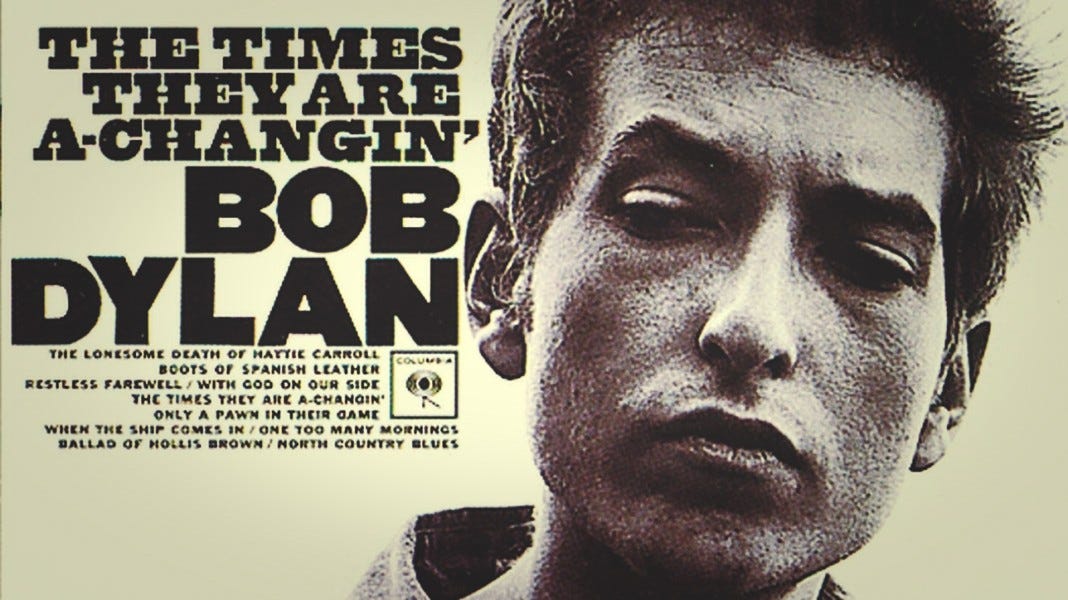Make The Point
Watching two extraordinary French Open finals this weekend, I was captivated by the tennis mastery on display, as well as the lessons about resilience and focus that unfolded before millions of viewers. In the women's final, Coco Gauff faced a seemingly insurmountable deficit, down two breaks in the second set, yet managed to maintain her composure and systematically work her way back to victory while her opponent succumbed to the weight of past mistakes. Similarly, Carlos Alcaraz found himself staring at defeat, trailing Jannik Sinner by two full sets, later down three championship points in the fourth set, only to mount one of the most remarkable comebacks in tennis history, culminating in a breathtaking fifth-set tiebreaker. Watching the calm of each of these exceptional athletes as they faced what many would consider insurmountable deficits, these matches reminded me that the difference between champions and everyone else often comes down to their ability to play the point currently facing them rather than being haunted by the past or paralyzed by future possibilities. As these athletes navigated pressure, adversity, and opportunity, three critical insights emerged about leadership under pressure: the power of staying calm regardless of circumstances, the futility of trying to predict an unpredictable future, and the transformative impact of maintaining focus on the present moment.
Maintaining composure when everything seems to be falling apart is almost a magical power. Both Gauff and Alcaraz faced moments when conventional wisdom suggested the match was over, yet neither allowed the scoreboard to dictate their emotional state or strategic approach. In leadership, we encounter similar moments when projects fail, markets shift unexpectedly, or team members fail to meet our expectations. The natural tendency is to let these setbacks create emotional turbulence that clouds our judgment and affects our decision-making. The most effective leaders understand that maintaining emotional equilibrium isn't about denying reality or suppressing legitimate concerns. Instead, it's about acknowledging the current situation without allowing it to overwhelm our capacity to think clearly and act decisively. By staying calm under pressure, we model resilience for our teams and create space for creative solutions to emerge. This composure becomes contagious, helping our entire organization maintain confidence when facing seemingly impossible odds or just daily obstacles.
It's also crucial to recognize the limitations of our ability to predict future outcomes, no matter how certain they may appear in the present moment. At multiple points during both finals, commentators and spectators alike began writing the narrative of inevitable defeat for the eventual winners. This tendency to translate current trends into future outcomes also applies to business leadership. Early indicators of success or failure cause us to plan for scenarios that may never materialize. While strategic planning and risk assessment are essential leadership functions, the most effective leaders understand the difference between preparing for multiple possibilities and becoming psychologically committed to a single outcome. They maintain strategic flexibility while staying focused on executing well in the present. This approach allows them to pivot quickly when circumstances change and capitalize on opportunities that others miss because they're too invested in their original predictions about how things would unfold.
The most crucial lesson involves the discipline of focusing exclusively on the immediate task at hand. Throughout their comebacks, both champions demonstrated an almost supernatural ability to treat each point as an isolated event, neither carrying forward the momentum of previous mistakes nor getting ahead of themselves with thoughts of victory. They understood that tennis matches, like complex leadership challenges, are won through the accumulation of small, well-executed moments rather than through grand gestures or emotional surges. This point-by-point mentality translates directly to effective leadership, where our ability to break down overwhelming challenges into manageable components determines success or failure. Instead of being paralyzed by the magnitude of what we're trying to accomplish or distracted by past failures, we can focus our energy on executing the next right action, then the one after that, building momentum through consistent performance rather than hoping for miraculous breakthroughs.
In life and leadership, the ability to play the point we're in represents one of the most powerful tools we can develop for navigating uncertainty and achieving breakthrough results. By staying calm under pressure, accepting the unpredictability of future outcomes, and maintaining laser focus on present-moment execution, we can guide those we love and lead through any challenge while positioning ourselves to capitalize on opportunities that others miss because they're focused everywhere except where they need to be.
With love, gratitude, and wonder,
Scott
The Times They Are A-Changin’: How Creative Industries Are Embracing Generative AI by Vanessa Patrick
In this insightful piece, Vanessa Patrick opens with Bob Dylan's prophetic 1964 lyrics about changing times, setting the stage for her exploration of AI's transformative impact on the marketing and advertising industry. Following her visits to New York firms through the AEF's Visiting Professor Program, she examines how Dylan's words resonate in today's moment of profound industry change, where the "loser now will be later to win" as traditional approaches give way to AI-driven innovation.
Patrick highlights a critical divide emerging between open-source and proprietary AI approaches, exemplified by WPP's substantial $400 million annual investment in their proprietary WPP Open platform. She identifies three strategic advantages driving this commitment: enhanced client confidentiality for sensitive creative IP, the development of co-evolving human-AI expertise that integrates seamlessly with creative workflows, and comprehensive end-to-end capabilities extending beyond open platforms. With over 50,000 employees using the platform monthly and successful AI-powered campaigns featuring celebrities like José Mourinho and Shah Rukh Khan, Patrick argues that competitive advantage will belong to those who integrate AI strategically and creatively, embodying the collaborative spirit captured in her closing quote from WPP's Elav Horwitz about collaboration being "a creative multiplier."
“Burnout, Boredom, and the Big Lie About Work” *(Spoiler: Your job can’t complete you.) by Betsy Wills
Betsy Wills offers a refreshing perspective on workplace boredom that challenges the common impulse to immediately quit unsatisfying jobs. Rather than viewing all workplace dissatisfaction as a sign you're in the wrong career, Wills suggests that boredom often signals unused natural abilities—what she calls "aptitudes"—that are like caged greyhounds or high-performance cars stuck in traffic. She argues that modern expectations for work to fulfill every aspect of our lives are unrealistic and contribute to widespread professional misery.
Wills advocates for "career wellness" instead of the traditional work-life balance concept, emphasizing that no single job can exercise all of our natural talents. Her solution involves identifying which aptitudes aren't being used at work and finding alternative outlets through hobbies, volunteer work, or creative pursuits. Whether it's musical ability channeled through local choirs or spatial reasoning expressed through woodworking, she encourages readers to feed their underutilized talents outside the office. Before making dramatic career changes, Wills suggests getting curious about what your mind truly needs rather than automatically blaming your job for every moment of professional restlessness.
Connection Crisis: Leaders are Lonely Too! by Morag Barrett
In her latest piece, Morag Barrett tackles the growing epidemic of workplace loneliness that's quietly undermining both individual well-being and organizational success. Despite our hyper-connected digital world, she reveals that leaders are increasingly feeling isolated, with a staggering 20% reporting they have no friends at work. Barrett presents compelling statistics showing that workplace loneliness costs U.S. employers $154 billion annually while contributing to reduced productivity, higher absenteeism, and increased turnover rates. She argues that traditional corporate solutions, such as wellness webinars and meditation apps, while well-intentioned, fall short because they fail to address the root cause of disconnection.
Barrett introduces her concept of "Meaningful Connectivity™" as a more effective approach, emphasizing intentional presence over superficial networking. Her framework centers on two crucial questions: "How do I feel in my presence?" and "How do others feel in my presence?" She advocates for leaders to model vulnerability and authentic connection, noting that "lonely leaders can't build connected teams." Rather than treating loneliness as a personal weakness, Barrett frames it as a valuable signal that highlights our fundamental need for meaningful workplace relationships and calls for organizations to make connection a strategic priority.













